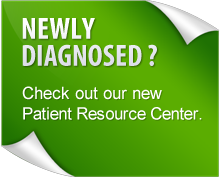Dysautonomia is a medical term often utilized for a group of complex conditions that are caused by a dysfunction of the autonomic nervous system (ANS). The ANS regulates all of the unconscious functions of the body, including the cardiovascular system, gastrointestinal system, metabolic system, and endocrine system. A dysfunction of the ANS can cause debilitating symptoms and may pose significant challenges for effective medical treatment.
Orthostatic intolerance (the inability to remain upright) is a hallmark of the various forms of dysautonomia. Dysautonomia conditions can range from mild to debilitating and, on rare occasions, can be life threatening. Each dysautonomia case is unique and treatment must be individualized and may include pharmacological and non-pharmacological methods. Patients should be evaluated by a physician who is well-versed in the recent treatment modalities.
Who Does It Affect?
Childhood dysautonomia conditions typically (but not always) strike adolescents, often after a period of very rapid growth. There is a female to male ratio of 5 to 1. Some patients report a sudden development of symptoms after a viral illness, immunization, or trauma. Others may see a more gradual onset. Although very rare, there are children born with life threatening non-familial forms of dysautonomia. There is also a distinctive form of dysautonomia called Familial Dysautonomia (FD) that has been identified in individuals of Ashkenazi Jewish extraction.
The symptoms of dysautonomia conditions are usually “invisible” to the untrained eye. The afflicted child may visually appear to be as healthy as those around him. The manifestations are occurring internally, and although the symptoms are verified medically they are often not visible on the outside. Symptoms can be unpredictable, may come and go, appear in any combination, and may vary in severity. Often patients will become more symptomatic after a stressor or a physical activity. Patients may find themselves involuntarily limiting their life-style activities in order to compensate for the conditions.
Dysautonomia conditions are widely unknown to society at large. As a result, most people do not realize the impact such conditions have on those afflicted and their families. Children who have dysautonomia struggle with some of the most basic functions that healthy people take for granted, beginning with getting out of bed in the morning. Each day and each moment brings new and unexpected obstacles. Yet, despite the betrayal of an uncooperative body, these young individuals face life with profound courage and incredible strength.
Symptoms
Symptoms of dysautonomia may include tachycardia (extremely fast heart rate), bradycardia (slow heart rate), palpitations, chest pain, dangerously low blood pressure, wide swings/sudden drops in blood pressure, orthostatic intolerance (the inability to remain upright), excessive fatigue, exercise intolerance, dizziness, fainting/near fainting, gastrointestinal problems, nausea, insomnia, shortness of breath, anxiety, tremulousness, frequent urination, convulsions, cognitive impairment, visual blurring or tunneling, and migraines.
Most of our DYNA members are diagnosed with conditions such as: Postural Orthostatic Tachycardia Syndrome (POTS), Neurally Mediated Hypotension (NMH), Neurocardiogenic Syncope (NCS), Vasovagal Syncope, Generalized Dysautonomia, Birth Dysautonomia, Non-Familial Dysautonomia, and Post-Viral Dysautonomia. There is also a distinctive form of dysautonomia called Familial Dysautonomia (FD). Familial Dysautonomia has been identified in individuals of Ashkenazi Jewish extraction and has wonderful organizations directed towards serving the children afflicted with it.
Please CLICK below to learn more about dysautonomia!



